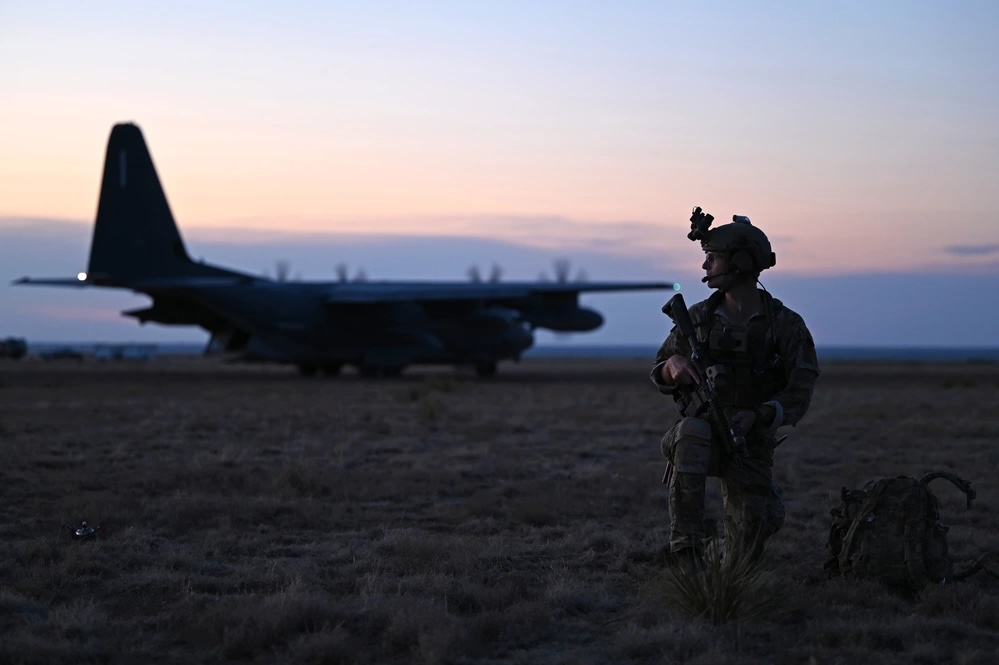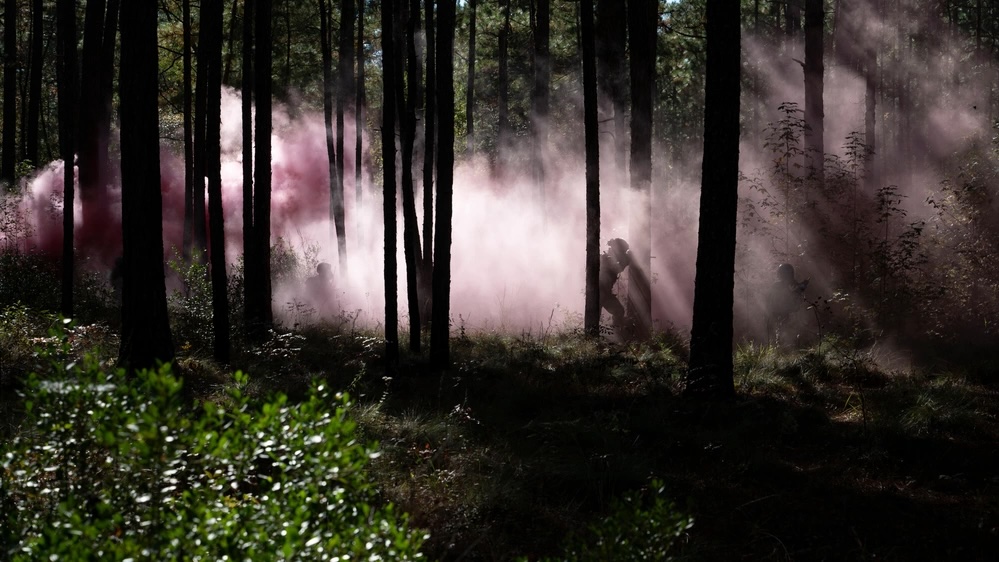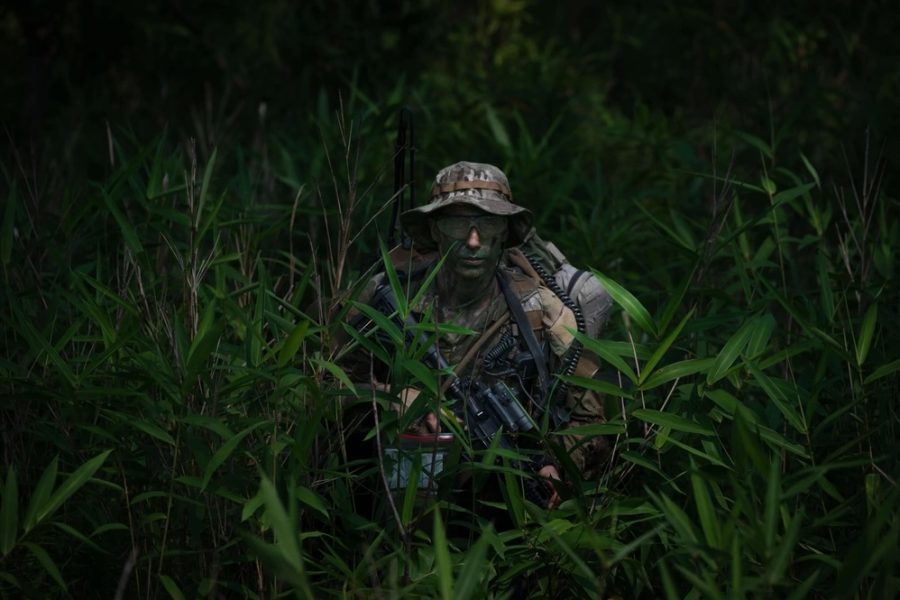Editor’s Note: This is the first of three-part series on Air Force Special Reconnaissance. The second story can be found here, and the third can be found here.
FORT LIBERTY, N.C.— In most professions, the path of least resistance is the best, but the opposite is often true for the Air Force’s newest special warfare field: special reconnaissance (SR).
“Going through sniper school, you try to walk through the worst terrain that you can find because that’s where nobody else wants to go,” said Tech Sgt. J, an SR Airman whose full name was withheld for security reasons. “Vines and sticks grabbing onto your ghillie suit … it can be a pretty humbling experience.
Sneaking through swamps is one of many key skills in SR, where the goal is to provide timely and accurate intelligence needed to apply airpower. They are trained on the full range of reconnaissance tools, from crawling in a ghillie suit and peering through a sniper scope to flying small drones to using other equipment to gather intelligence through cyberspace and electronic warfare.
“All the other sister services have their own reconnaissance assets,” J said. “The Air Force was looking at a more niche capability, specifically for what kind of problems pilots are going to have.”

SR first emerged in 2019 as the replacement for special operations weather teams (SOWT), which gathered weather and environmental intelligence in hostile territory. In the years before that shift, SOWT Airmen started adopting some of the skills that make up the core of SR today. Though SR training still includes some weather elements, the main purpose of the field is to conduct air-minded reconnaissance as the Air Force and the wider U.S. military prepare for a possible conflict against a near-peer adversary like China.
“Basically we are looking at solving the integrated air defense problem that China, Russia, or Iran is going to have,” J said. “We’d be looking at opening airways for follow-on forces. The Air Force doesn’t want to have to rely on Army assets to open up those airways.”
In a future conflict, SR Airmen may find themselves observing enemy anti-air defenses, gathering intelligence on enemy troop movements, conducting real-time battle damage assessments after an airstrike, or scouting aircraft landing zones. Satellites or aerial reconnaissance may be unavailable, which is why SR Airmen are trained in the old-school method of crawling through the bush.
“We weren’t doing that in Afghanistan because there was no reason to accept that risk—we could just put an MQ-9 over the target for a week,” said Capt. Max Krasnov, a special tactics officer and training flight commander with the 352nd Special Warfare Training Squadron at Pope Army Airfield, N.C. SR “ensures that the Air Force has a way to get the ground truth under any situation. That’s why they are trained to the full gamut of reconnaissance techniques that are currently available.”
In terms of cyber and electronic warfare, J said his career field serves as “the link between the big computers and the target,” but he could not share specific capabilities due to security concerns. Krasnov offered a watered-down version of what cyber reconnaissance might look like.
“If I were to walk into a hotel lobby, log onto the guest Wi-Fi on my cell phone, and get the IP address that my phone connected to, I am gathering information about that hotel,” he said. “Play with your imagination as to where that can go.”

The wide range of skill sets involved in SR mean there are plenty of rabbit holes for Airmen to dive down.
“What I think is a cool thing about the career field is there are certain vectors that guys can really nerd out about,” J said. “Maybe a dude just really wants to deep dive into drones, you can do that. Guys want to go cyber warfare or higher-level intelligence gathering, we have avenues for that.”
Only 50 SR Airmen currently exist, though the Air Force hopes to grow that number to over 100. One of those could soon be Airman 1st Class S, a trainee in the SR Apprentice Course at Pope. While SR does not have the decades of lore enjoyed by other special warfare fields, such as combat control or pararescue, that was part of the attraction for S, whose full name was withheld.
“It was new and there are only a few people doing it … so I was curious to see what it was like,” he said.
Other service members feel the same way, including at least three prior Marines and a prior Green Beret.
“There has actually been, in my opinion, a surprising amount of cross-trainees or prior service people coming through,” said J, who listed long-range-shooting and cyber warfare as two reasons why some of them sought out SR.
Being so new, SR Airmen often have to explain what they do when they arrive downrange, but J considers that a strength rather than a weakness.
“I honestly think that it is a benefit for the kind of people we attract, because then they are forced to go out and prove themselves and their capabilities,” said the former SOWT.
J spoke from experience, having been attached to a team of Green Berets in Afghanistan a few years ago.
“I showed up and I said, ‘Hey, this is my little drone, this is what I can provide for you guys. I’ve got this training up into this shooting school, I’m a jumpmaster, I can do all this,’” he said. “And then the next step is to go to the range of that team and out-shoot them.”

